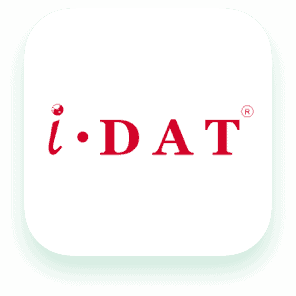More and more admissions offices have made the transition to paperless admissions management and the benefits are obvious. However, sometimes these systems contain hidden gems that can support the school’s marketing strategies as well. KIS International School has been using OpenApply since 2013, and the data collected through the system influences the marketing strategy of the school.
OpenApply is quite a flexible system and pretty much any type of information can be collected. Once it’s in the system it is easy to pull out to create reports and identify trends, which can subsequently be used in reviewing the marketing plans.
Filled in by the applicants, the inquiry form, application form and enrolment forms collect data about the student and their family for admissions purposes, and they also include some questions that are specifically included for marketing. This distinction may or may not be very clear.
Some examples of information that KIS collects for general purposes are: student nationality, parents’ place of work and current school. While the academic team would like to know where students are from and where they have studied before, the marketing staff may look at the nationality field and notice that there are very few students from a certain nationality. Further research may, for example, indicate that KIS does not offer that particular mother tongue language, perhaps worth introducing at some point.
Or one may look at the “current school” field and extract the data from this academic year and compare it to last academic year. Perhaps last year there were several applicants from one particular kindergarten, and this year there were none. The team would then analyse this result. Has there been a change in the kindergarten’s management? Has the marketing team visited the kindergarten recently? Have they expanded to include a higher year group? KIS may then make an effort to go and meet with the feeder school, or make a note to recruit into the next grade level the following year. On one occasion at KIS there were many more applicants than usual from the same school. The inquiry form, which asks,
“Why are you changing schools?”
allowed the family to input the information that their current school was closing down. KIS then contacted the school and asked for an opportunity to introduce KIS to the families there – just another example of how data collected in OpenApply can be used to market the school.
Schools may also review information about the parents’ company. Perhaps there is a new company that is starting to send more applicants. How can you build on that? Would it be worth discussing a corporate deal? Or if you read in the news about a multinational expanding, perhaps you want to check your database to see if there are any of your current parents working there who can help with an introduction to the HR Director.
The inquiry form at KIS International School also contains specific marketing questions to identify the lead source as well as the main consideration factors, such as: “How did you hear about the school?”, “What are the important factors in choosing a school?” and “Why did you choose to apply to KIS?”.
While it rarely happens that there is one sole source of information that parents identify when they say how they heard about the school, from these results you can get an idea of which marketing activities are working and which are not. No one will be surprised to hear that the top two, far above any other choices on the list are “word of mouth” and “internet search”. But you may see an increase in “social media”. Or if you are not seeing that, you may want to consider reviewing your social media strategy.
The data collected from the field
“What are the important factors in choosing a school?”
(KIS’s options include curriculum, facilities, location, atmosphere, reputation, and others) helps identify customer purchasing behaviour. It shows the areas the school must excel in to attract those particular families, and when creating a marketing strategy, it helps develop the “personae” or profiles of the target customers.
“Why did you choose to apply?”
helps identify the strengths of a school. And even questions such as: “Are you interested in the school bus” provide valuable information regarding individual families (is location an issue for them?) as well as trends, such as from which age parents comfortably let their children use the school bus or the age at which students stop using the bus and commute using public transportation instead?
OpenApply has an analytics module which allows schools to quickly see trends in companies, countries, and nationalities. Other data can be custom filtered in OpenApply and/or exported to create reports in, for example, Excel. Some examples of trends that can then be identified are:
- Do employers cover the costs for 4 year-olds?
- Which schools are direct competitors?
- Which feeder schools give us the highest conversion rates?
- Which grades have the highest interest and enrolment?
- If applicants did not enroll, did we decline them or did they decline the school, where did they go and why?
- Admissions funnel: at what stage do we “lose” families?
- Which months do we get the most inquiries?
- Is our advertising paying off?
Once trends have been identified, action can be taken to improve the quality and quantity of the inquiries and enrolments.
 These are just some examples of how KIS uses OpenApply to gather data for the marketing team. If you already have an online application portal it should not be too difficult to set up something similar for your school. Provided you ask the right questions and families answer them truthfully the collected data can provide valuable information to direct the school’s marketing strategy.
These are just some examples of how KIS uses OpenApply to gather data for the marketing team. If you already have an online application portal it should not be too difficult to set up something similar for your school. Provided you ask the right questions and families answer them truthfully the collected data can provide valuable information to direct the school’s marketing strategy.
















 All Services
All Services


